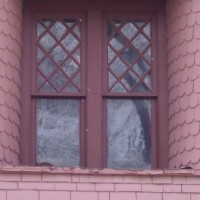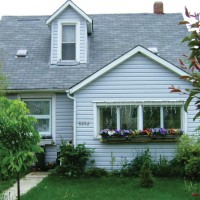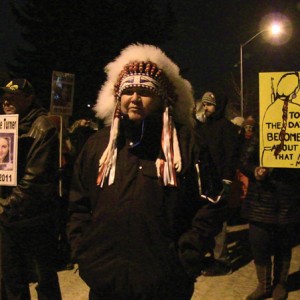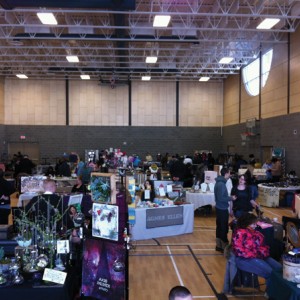Historic Houses of McCauley

McCauley is home to many beautiful, old houses, some of them older than a century. Here is a look at just two of them, by their owners.
The McCauley Green House
This beautiful, large, green house is home to a family and a business.
by Janice Zubin
We have owned our circa 1908 McCauley historical house since February 2008 and have grown to love the neighbours and community as much as our home. Cherry wood pocket doors, door casings and built in china cabinets, wide stairwells with fine wood banisters, and original hardwood floors are all features of this heritage character home. However, the most amazing is the third storey attic window, with its curved walls of tear drop shingles, described by architect David Murray as “a great and somewhat unusual detail.”
David Murray is an Edmonton architect known for historic building restoration, as well as historic site and building development. In 2011, David received the Edmonton Historical Board Recognition Award and is involved with the Edmonton Historical Board (EHB), an advisory board to the City Council. EHB advises on historical issues, heritage policies, and works on historical education.
It was David Murray who suggested I contact the city about historical status for our beautiful McCauley house. In this site survey and interview with the city, I discovered that our house would meet requirements by simply changing back two windows to historic replicas and restoring the front porch to its original open structure.
It just seemed natural that it is a good fit to house my traditional naturopathy practice in our McCauley heritage home, since there is more interest in effective natural ways of healthcare and the “old ways” of healing. We have used our green heritage house as the theme. The Green House Health Centre evolved naturally and in February of 2013, the City of Edmonton business license was upgraded to a major from minor home based business.
Although our heritage house is a basic Edwardian Four Square design, it has some unique features. One of these is the deeply inset attic window design already mentioned. The second outstanding feature is the third storey attic creating a very steeply pitched roof. Usually Four Square designs have at least one dormer but ours does not. It’s possible that some talented architect designed our heritage house in the pre-WWI period. In Edmonton, major urban growth occurred between 1905-1913 after the urban settlement phase from 1870-1904.
It’s interesting to take note of the fabled “Golden Section” of classical architecture, where the windows and other visual elements that compose the facades of old houses are organized by regulating lines in a kind of fugue. This ratio (1:1.618) is consistent with the proportions of the human body and is seen throughout nature. In modern days, we have forgotten the “old way of seeing” and lost the innate sense of pleasing design. This fabled element of classical style goes all the way back to Egyptian and Greek architecture.
Janice Zubin operates www.thegreenhousehealthcenter.ca.
History in Your House?
Did you know that your house might have a history? Here is what Joanne discovered after doing research on previous owners.
by Joanne McNeal
Have you ever wondered who lived in your house before you? I have been curious, especially since a woman told me that she had raised seven children in my little house. I was amazed. Where could she have put them? My house has barely 1000 sq. ft. Then another person told me there used to be a bakery on 110 Avenue, yet now there are only houses.
Finding the history of an old house is like solving any mystery: there are clues here and there but one has to dig deep to find even a partial truth. So I spent an afternoon at the City of Edmonton Archives recently trying to find out more about my house. I was amazed at how much information I could gather in a few hours there. Some of the early information is also now on-line, and the staff was very helpful. They have many old photos and other forms of records. The ones that I used the most were the Henderson’s Directories which are like a phone book from past years. They list by year, addresses, residents and occupation, businesses, and government departments.
First, I discovered that 110 Avenue used to be named Wilson Street (between 95 St. and 92 St.) The first listing of my house appears in 1910, and the resident was listed as a labourer for Pheasey & Batson. Could they have built my house? In 1912 a real estate person is listed as living here. Between 1913 and 1923 almost every year the resident’s name changes, but many of their occupations had to do with baking, with one exception, a man who worked for the Department of Education. Then I discovered that just down the street at 9413 110 Avenue there was a bakery: McGavin’s, which was apparently there from 1910 to 1928! How interesting. This was a boom time in Edmonton, so maybe my little house was a residence for bakery employees? More research is needed to find that out.
In 1923 Adolph Merkel lived here until 1938, and his occupation was listed several ways: as a clerk, a teamster, and as a driver for Eaton’s. During WWII there are again a number of people listed as living here, most were workers for Canada Packers, the CNR, or McGavin’s Bakery. There is just one woman listed as living here during the war. Maybe her husband was in the service? From 1947 to 1950 a salesman for McGavin’s Bakery lived here. That is as far as I have gone, and I have another 40 or so years more to search, in order to bring the history up to date. The woman I bought this house from had lived here for 27 years, and I’ve lived here for 7.5 years.
I found this so exciting. The people who lived here were all hard-working, and were not famous in any way. They raised their families, contributed to the neighbourhood, and to the City of Edmonton in the early growth years, and that is important. It seems my little house has sheltered many families well, and I’m pleased there is a connection to the bakery.
My little house is just over 100 years old, and has about 1000 sq. ft. This house has a living and dining room that span the front half of the main floor with a kitchen and a tiny study, on either side of stairs that go steeply up the middle. Upstairs is a main bedroom, a tiny bedroom, plus a long bathroom with a clawfoot tub, all with partially slanted ceilings. The partial basement is only under the kitchen. When I bought the house it had no closets, no interior doors, a rotting kitchen counter, and almost no other storage. The biggest window was single paned. But to its credit, the house had 9’ ceilings, hardwood floors, a porch front and back, and a fairly big yard. What I did not see was the house had no insulation. So, since 2006 I have been working hard to upgrade the deficiencies. I still have a ways to go. Much of the workmanship on the house seems solid, but there are shortcuts I do not understand, like mouldings with a diagonal seam on top of a door. Who would do that? Perhaps someone who didn’t have a lot of money to spend on repairs?
Joanne McNeal is a McCauley homeowner who recently had solar panels installed on her roof. She is still working to upgrade the insulation and other essentials in her home. Renovation is never complete!





